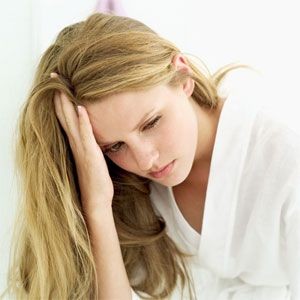Menstrual cramps also known as dysmenorrhea are agonizing or cramping pain in the lower abdomen and they are experienced before and during the menstrual period. Menstrual cramps are considered severe in some cases that they interfere with the regular activities of the individual for a few days every month. Menstrual cramps can be caused by conditions like endometriosis or uterine fibroids.
Symptoms of menstrual cramps
- The presence of dull and constant aches
- An agonizing or cramping pain in the lower abdomen that may become intense
- Pain that goes to the lower back and thigh
- Some women may experience nausea, headache, dizziness and a loose stools
Causes of menstrual cramps

During the menstruation period, the uterus causes contraction to expel its lining. A hormone-like substance known as prostaglandins that generates the uterine muscle contraction and causes pain and inflammation, but high levels of prostaglandins can cause a more severe menstrual cramp.
A severe contraction can constrict the blood vessels that feeds the uterus which results to pain that is similar to one that is experienced in chest pain that happens when a blocked blood vessels does not have enough flow of oxygen to the blood. Menstrual cramps can also be caused by the following:
- Uterine fibroids – are non-cancerous growths found in the walls of the uterus that will cause pain
- Endometriosis – is a painful condition where the tissue that is lining the uterus is implanted on the outside of the uterus usually in the fallopian tubes, ovaries or tissues that line the pelvis. It can also cause menstrual cramps.
- Adenomyosis – is a condition where the tissues lining the uterus grow on the muscular walls of the uterus.
- Pelvic inflammatory disease – an infection of the reproductive organs of females and caused by a sexually transmitted bacteria. It can also cause menstrual cramps.
- Cervical stenosis – a condition where the opening of the cervix is so small, that it minimizes the menstrual flow, causing painful pressure inside the uterus.
Treatment and home remedies
- Take over-the-counter pain reliever like ibuprofen. Take the pain reliever at the beginning of the menstrual period and continue taking the pain reliever for two to three days or until symptoms subside.
- Take oral birth control pills that contain hormones in preventing ovulation and minimize the severity of menstrual cramps.
- Encourage the individual to perform exercises every day to minimize the pain of menstrual cramps.
- Soak in a hot bath or use a heating pad, hot water bottle or a heat patch that will be placed in the lower abdomen since it can minimize the menstrual cramps. If you want to learn more about the effectiveness of heat, click here to learn more.
- Take some dietary supplement like vitamin E, omega-3 fatty acids; thiamine and magnesium supplements since they can reduce menstrual cramps.
- Minimize the use of alcohol and tobacco since these can make menstrual cramps worse.
- Reduce the stress level since it causes an increase of risk of having menstrual cramps and its severity.
